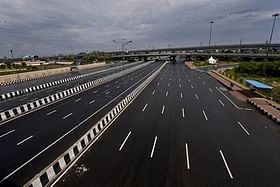The Union Ministry of Road Transport has drawn an elaborate plan to have OFC (Optical Fiber Cable) infrastructure along 25,000 km of national highways in the next three years.
In this regard, bids have been invited for laying OFC ducts for a total length of about 2000 Kms at a total cost of Rs 500 crore. This includes one brownfield and one greenfield pilot project, namely, Hyderabad-Bangalore National Highway & Delhi-Mumbai Expressway (DME).
Delhi-Mumbai Expressway passes through 23 districts impacting population of approximately 6.58 crores, and Hyderabad-Bangalore National Highway impacts population of approximately 3.6 crore.
“Given the financial sustainability of the OFC model through initial investment from the Government, the Government plans to scale up the leased OFC infrastructure from ~2000 kms to 25,000 kms in the next 3 years,” the Ministry said.
Need for OFC
Large stretches of National Highways in the country currently have a total lack of mobile network connectivity, which is a serious cause of concern since the same leads to issues in connecting to emergency services as well.
Besides the safety aspect, having basic mobile connectivity while travelling is getting more and more important in the modern times, with navigational services and several other forms of important communications relying on on-the-go mobile connectivity.
A Parliamentary Committee, taking note of this fact had recommended to the Road Ministry to take suitable measures to ensure good mobile connectivity for NH users, in coordination with the Department of Telecommunications and other organizations concerned.
50 lakh km OFC
The government in 2019 had announced National Broadband Mission to enable fast track growth of digital communications infrastructure.
Accelerating Fiberization is one of the key components of this initiative which entails developing 50 lakh kilometers of OFC infrastructure by 2024 in India.
The Road Transport Ministry which is one of the key stakeholders of this initiative is closely working with Telecom Regulatory Authority of India (TRAI) to create smart and digital highways by providing dark-fibre connectivity along the national highways allowing for a direct plug-and-play model for users.
This initiative will empower the Government to provide internet connectivity to remote locations and far-flung areas all across the country where users like private players, village panchayats, can get connectivity from the tapping point from the nearest highway section.
The OFC infrastructure has been designed to cater to increased data volumes till 2050.
This initiative will significantly boost 5G roll-out across the nation and also aid in providing various value-added services like booth-less toll collection, surveillance, speed limiting radars and controls, smart highway lighting, connectivity on demand.


